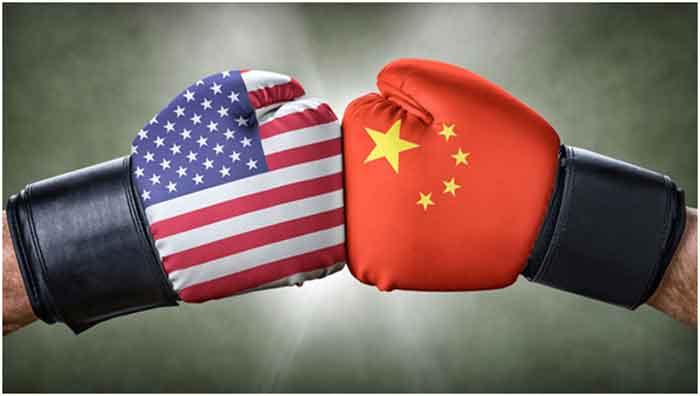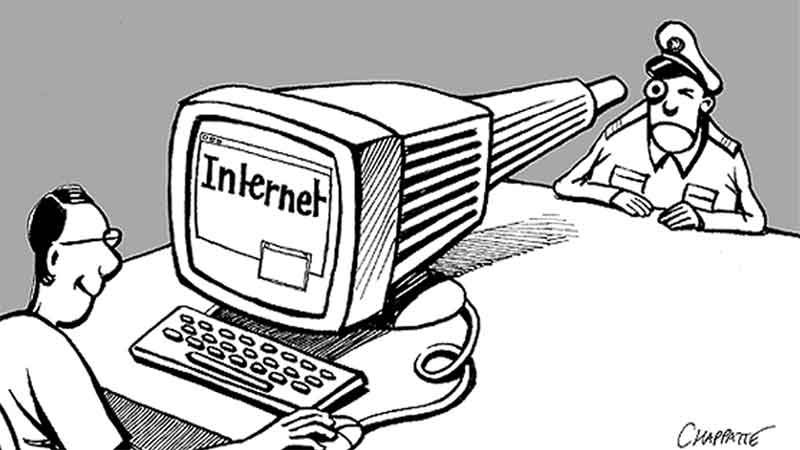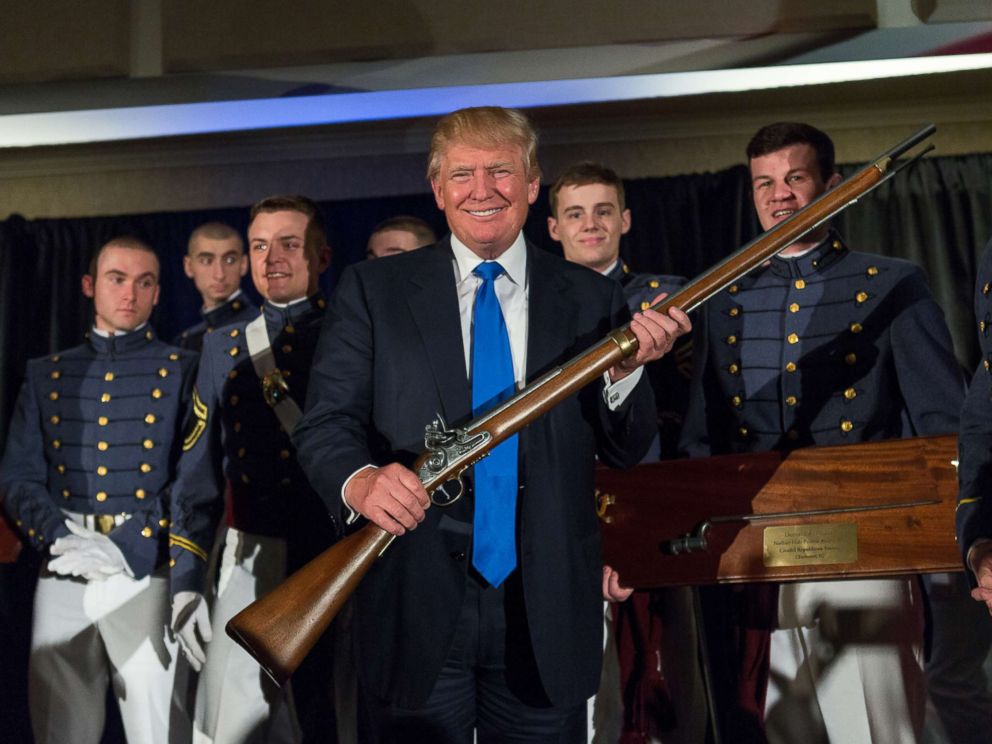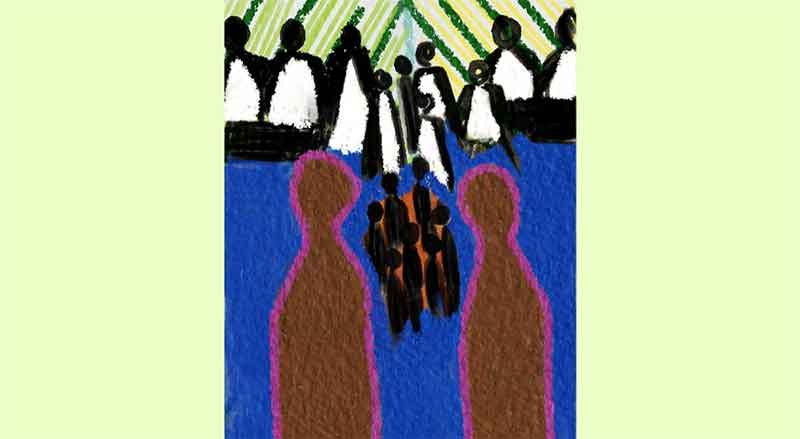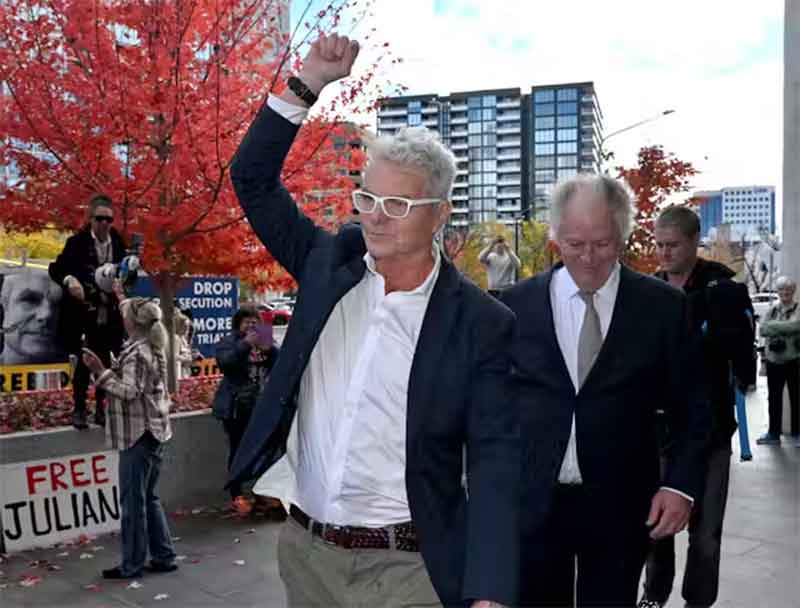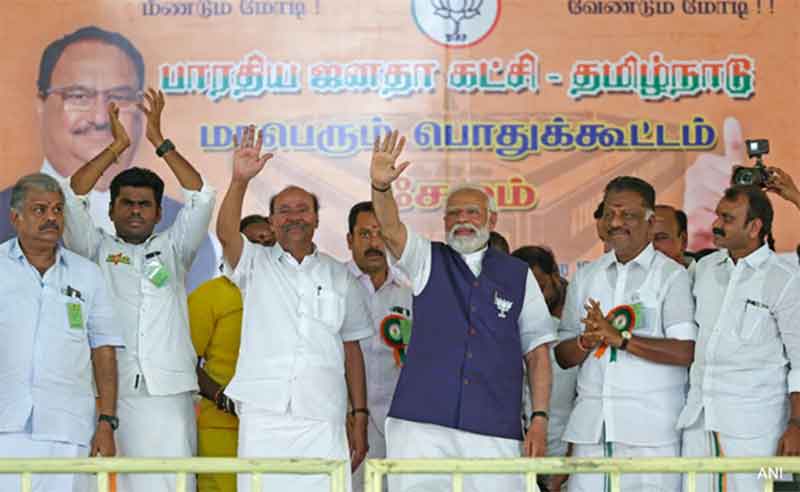‘Revolution and Counter Revolution ‘printed by Foreign Languages Press in November 2021 and written by Pao Yu Ching is a most analytical work .It stands amongst the major achievements in modern times summarising the positive strides made by China under Mao from 1949-78 and how those objectives were inverted 180 degrees after 1978 after Deng Xiaoping.
 With intrinsic details she evaluates how in every juncture from 1949-78 it applied Marxism-Leninism to promote the emancipation of the peasantry and from the yoke of landlordism and feudalism and workers from capitalism. It described how China left no stone unturned in abolishing illiteracy, eradiating unemployment, giving proper housing and medical facilities to all etc.It elaborated the methodology of how the peasantry was pooled into first co operatives and communes to run their own farms.schools etc.Most illustratively it recounted how the Great Proletarian Cultural Revolution was a scientific development of Marxism-Leninism and enabled proletarian power to scale a height untraversed in history, with workers and peasants governing their means of production as never before. Most articulately the Western propaganda was refuted which classed the Great Leap Forward and the Cultural Revolution as a disaster. The book portrayed the most innovative achievements of production methods, education and medicine, like peasants conducting classes in colleges or workers teaching students in factories. Above all it portrayed the consistency of the Worker-Peasant alliance fro 1949-78,as a rural development strategy.
With intrinsic details she evaluates how in every juncture from 1949-78 it applied Marxism-Leninism to promote the emancipation of the peasantry and from the yoke of landlordism and feudalism and workers from capitalism. It described how China left no stone unturned in abolishing illiteracy, eradiating unemployment, giving proper housing and medical facilities to all etc.It elaborated the methodology of how the peasantry was pooled into first co operatives and communes to run their own farms.schools etc.Most illustratively it recounted how the Great Proletarian Cultural Revolution was a scientific development of Marxism-Leninism and enabled proletarian power to scale a height untraversed in history, with workers and peasants governing their means of production as never before. Most articulately the Western propaganda was refuted which classed the Great Leap Forward and the Cultural Revolution as a disaster. The book portrayed the most innovative achievements of production methods, education and medicine, like peasants conducting classes in colleges or workers teaching students in factories. Above all it portrayed the consistency of the Worker-Peasant alliance fro 1949-78,as a rural development strategy.
Most logically the author evaluates that after 1978 Deng undid all what Mao undertook .China smashed every brick in the wall to place technology and capital to the service of the exploiter classes ,with foreign capital penetrating every rung of society and profit promoted as the goal.
A reader understood how Mao’s leadership during its first 20-plus years, developed its productive forces based on self-reliance with the goal of satisfy-ing people’s needs and maintaining its national security against imperialism. This goal only became possible when proletarian politics were putting command to pursue socialist development. In the 1949-1976 period, which covers the whole socialist period, China’s economic development was closely linked to political struggles based on the dictatorship of the proletariat in strong and close alliance with the peasantry. Mao’s model of socialist development assured the people their necessities of life, improved their standard of living, and protected China’s national security. This development model freed the Chinese people from foreign domination, which had subjected them to over a hundred years of war and plunder.
It is praiseworthy that it touches on the mass line aspect and how in certain junctures the CCP was unable to implement it. It traces the genesis of anti- feudal and anti-imperialist consciousness from the 1930’s itself .Most illustratively it convey how capitalism has penetrate the very roots of the superstructure of China in all spheres.
It highlights the important rebellions of left forces after the 1990’s by workers, peasants and Communist party members themselves and repression unleashed o pro-maoist forces. Many an example is narrated of how Mao’s pollicise are still revered. A prospective and encouraging review is given on how Mao’s ideology inspired revolutionary movements worldwide to demarcate from revisionism.
The book most lucidly explained to readers the cutting edge of establishment of ‘dictatorship of the Proletariat ‘ from that of a bourgeois democracy .Clinically, it explained the various mass movements that elevated people’s power.
The book reveals that Mao’s second great contribution was his continuous consistent struggle against modern revisionism both internationally and domestically, which eventually led to the Great Proletarian Cultural Revolution in 1966.She elaborated how the principles that defined Mao’s leadership in these struggles on both fronts continue to provide guidance for revolutionaries in today’s struggle both inside and outside China.
Finally she undertakes a most balanced debate on whether China can be classified as a fully fledged Imperialist power, assessing the growth of the capitalist economy in China and its impact on trade with other nations. or world markets.
Policies of China from 1949-76
Papers in Part I demonstrate that the struggle between socialism and
capitalism began on the very establishment of the founding of the People’s Republic of China and that Deng Xiaoping’s capitalist Reform in 1979 can be traced back to what he and Liu Shaoqi tried to implement as early as the 1950s. There-fore, Deng’s propagating that his Reform did not have any preconceived plan and was merely intended to implement “socialism with Chinese character-istics” was a strategy to misguide the masses. These papers also show why the launching of the Cultural Revolution in 1966 was imperative for proletarian revolutionary class to retain political control and advance socialism after struggling against revisionism for 17 years—and refute Deng’s propaganda that Mao launched the Cultural Revolution merely to retain his personal hold on political power.
The second part, entitled “Socialist Construction and Mao’s Development Model,” consists of one major essay: “China’s Model of Socialist Development, 1949-1978.” In this text, the distinctive model of China’s socialist development is projected in contrast it with capitalist development in other less developed countries in the post-World War II era; The book classically contrasts China’s socialist development from 1949 to 1978 with its subsequent capitalist development from 1979. Concrete experiences of China’s socialist development exhibit that a less developed country can indeed develop its productive forces and maintain its political inde-pendence and integrity without depending on either financial or technological“aid” from imperialist countries. It refutes in the very belly the claim that socialism failed—a claim asserted by mainstream economists in the West and many of their disciples who returned to China to advocate for capitalism. China continues to be a model for the poor and oppressed nations to emulate and for China to return to in the future.
“During the socialist period China pursued a self-reliant socialist economic development, which provided food, medical care (especially preven-tive), education, and better living conditions for all Chinese people both in the cities and in the countryside. In the countryside, peasants under the commune system and made significant qualitative improvements to China’s scarce arable land applied their enormous labour power to build agricultural infrastructure and to improve the quality of soil. In the cities, workers in major industries were able to accomplish the initial industrialization. In the short period of twenty years China was able to achieve partial mechanization in agricultural production, achieve self-sufficiency in food, and produce enough raw materials for the needs of industrial production for the early stage of industrialization. It’s population lived with economic and political independence without any interference from foreign capital or powers. “
By the end of the 1970s China had laid a solid foundation for furtheir economic development and Chinese people were looking forward to a future with more development, security, and prosperity. These accomplishments made by the Chinese people during socialism have been well documented in this book.
There is a most inspiring interview of Shen Jilan on the status of women in Xigou village.She elaborated how” It was after the founding of New China that the Commu-nist Party opened up the spiritual world of a vast number of peasants, especially peasant women, through the illiteracy eradication campaign. At the same time the social status of massive numbers of women was raised through women’s participation in production. I heard about the work you did in the early 1950s from my oral history work in Xigou and also from reading historical records,
leading women in Xigou in the struggle for equal pay for equal work.”
“Women’s participation in agricultural work was made easier when the burden of housework was reduced. Production brigades had machine- run grain processing stations that reduced women’s work in food prepa- ration. Women gathered in sewing stations and used its machines to sew their clothes instead of hand sewing; more ready-made clothes and shoes were also available. There were also childcare facilities where women could leave their young children.The status of Chinese women after Liberation rose in parallel with other indicators of the workers’ and peasants’ overall health and welfare. Even though China was still a poor country by the end of the 1970s, its health and welfare.”
Mass Line
The book penetrated dialectically into how practice of massline was undertaken.“After the CPC seized power, its survival (at least in the short run) no longer depended directly on the masses. The CPC had acquired such high
prestige that its members could have enjoyed as many privileges as those who seized power and established new dynasties in China’s long feudal history. Mao saw that the only way the CPC could maintain close links with the masses and continue to be the agent for change was through mass movements. Moreover, the mass movement provided an open forum where the masses could voice their opinions and express their discontent, criticizing party members for any wrongdoing or abuse of power. The mass movement also provided a test to check whether party members and others in authority actually practiced the mass line.”
The mass line, as expressed by the slogan “from the masses, to the masses,” meant that cadres should dig deepest to discover thoughts and feelings of the masses.. Their findings helped the CPC to study and analyze social conditions and determine the principal contradiction at the time. Policies could then be formulated to resolve the contradiction. To implement the policies, the cadres were again urged to disperse among the masses and explain these policies. The channels of a mass movement created space for new ideas to be propagated and important issues debated. If the policies truly manifested the interests of the masses, according to the mass line principle, the masses would eventually adopt them. Mass movements in the past provided the only opportunity to validate government policies.. However, the practice of “from the masses, to the masses” very often did complete justice to revolutionary democracy. Earlier instead of imbibing opinions and ideas from the masses, cadres were often dictated from orders from above. This promoted commandism and bureaucratism.
The participation of workers and peasants in movements, where important political, economic and social issues were openly discussed and debated, was an integral form of democracy in China during the transition. In the mass movement, the four da were practiced as the socialist form of democracy: damin (big voice), dafang (big openness), dabianlun (big debate), and dazibao (big-character posters). The masses were able to openly express themselves in these four ways during the mass movement.
The popular Western view on Chinese mass movements during that time often emphasized the suppression of ideas and opinions. This view is not entirely incorrect; ideas and opinions that were not in favour of the masses were often suppressed during the periods of mass movements. For example, during the land reform, when the landlord class was under attack, praising the good deeds of certain individual landlords was considered detrimental to the movement. (However, the Party continued to draw distinctions between good and bad landlords; only those who committed serious crimes were punished.) As stated earlier, during the mass movement the two sides of a contradiction transformed into the other. The creation of a new ideology played an important role in this transformation.”
“Critics charge that during mass movements, ideas were often imposed on the masses from the top and the worker and peasant masses had a hard time grasping the meaning of ideas that were detached from reality, let alone adopting or owning these as their own. Such situations happened during the latter part of the Cultural Revolution and possibly happened in other mass move- ments as well. Open discussion and debate extinguished and indoctrination transcended, making Marxism and Leninism dogmatic and putting massline into oblivion.
Post 1978 China
In the short term, the capitalist coup in China had a most adverse impact on organizations in the world. Already reeling from the wholesale collapse of the USSR, China
Revolution and Counterrevolution turning capitalist was more devastating and in many ways more confusing. The USSR had turned revisionist long before, but many who “sided” with China in the split between the socialist siblings in the 1950s did not necessarily understand the line-struggle in the CPC. As a consequence, most did not recognize Deng’s Reform for what it was: the decisive victory of the capitalist line and the defeat of socialism.
The book narrates how lack of understanding eventually resulted in the splitting of the international communist movement into several “camps.” Some, were unable to distinguish the line change and saw China’s actions under Deng’s leadership as cause to reject Mao during the Cultural Revolution. Others continued to dance to the tune of Deng’s capitalist reforms and policies—and also denounce the Cultural Revolution. A small minority in the International Communist Movement took some time to analyze the ground reality of the events. They grasped that Socialism was defeated not by some inherent flaw within it —but rather the result of usurping of power by the capitalists.
The book traced how rural reform proceeded to dismantle the commune system, after a brief period of earning higher incomes due to higher prices for their crops, peasants began to realize what happened. As part of the rural reform, many rural enterprises such as industrial workshops and pig and poultry farms were contracted to individuals who had close connections with the new xiang (county) governments that replaced the communes and the cun (village) governments that replaced the production brigades.No wonder peasants remarked: “We had worked so hard for 30 years and just overnight we are back to the pre-Liberation days.”
Quoting the book “Intellectuals have seen that throughout the Reform process, high- level government officials robbed public funds and became filthy rich. The new capitalist class, which is so closely connected to those in power—often the children of high-level Party and government bureaucrats went into business for themselves—used its political clout to grab public assets and land. The new rich also speculated in real estate and built gigantic com- mercial developments, which only made them richer. With medical care converted into a high-priced commodity, hospitals have been turned into profit-maximizing enterprises.”
“The victims in Chinese society today are the broad masses of people, especially workers and peasants. Most workers in export-oriented industries are migrant workers from all over China, who often do not have legal status in the cities where they work. Many export production factories first opened during the 1990s in the coastal cities in Guangdong and Fujian provinces and in the city of Shenzhen. These factories are mostly subcon- tracting firms owned by overseas Chinese investors from Taiwan, Hong Kong, Singapore, and other Southeast Asian countries. These subcontracting firms produce clothing, footwear, toys, and other household items for export under the brand names of multinationals. Workers in these factories have been given little training and suffer many workplace injuries on a daily basis. Doctors in hospitals in cities where these factories are located report that so many fingers are being severed in workplace accidents that they “collect fingers by the bushel.”
Bureaucratic Capitalists
The book throws light on how the bureaucratic capitalists in China a little closer, face great difficulties in transforming themselves from degenerated Communist Party members into a new rising capitalist class. “If they
had had the power to do so, they would have abandoned the title of the Chinese Communist Party long ago. As the capitalist Reform has proceeded further and deeper, penetrating all spheres of Chinese society, the bureaucratic capitalists have lost all their legitimacy to hold on to state power as representatives of the working class and are being challenged by both the Left and the Right. The Left has accused them of violating the CCP Charter and the Constitution of the People’s Republic, of oppressing the Chinese people, and of selling China’s interests to the imperialists— and declare that they are no longer real communists. Rightist elements have demanded changes in China’s political structure more in line with its economic reality, so they can participate in it as partners on more equal terms.”
Future
The book is most optimistic on the resistance of the Left today in China to confront the revisionist regime.“The current strategy of the Left seems to be one of concentrating its attacks both on the ideology of the extreme Right and on the rightist policies of the power holders. The Left has been working very hard to record and interpret China’s modern history, the history of CPP and of Chairman Mao, and the history of revolution led by the Chinese Communist Party under Mao. In doing so, the Left forces hope they will be able to organize large segments of the masses and unite as many as possible in reconstructing a revolutionary force. The Left in China was defeated more than 30 years ago when the Right seized political power and then began its capitalist Reform. How- ever, from what we can observe, the Left has not faded away. On the contrary, forces on the Left have revived and have been fighting furiously and relentlessly against the Right, which now holds political and economic power. As the contradictions in Chinese society intensify, forces on the Left will be strengthened further. They have fought those in power in every way possible—by engaging in ideological, economic and political struggles. They have published articles and books in print and online. They have held public forums discussing pressing issues. They have formed study groups to discuss Marx, Lenin, and Mao.”Illustratively it covers the polarisations within the CCP supporting genuine Socialism and the revolt they staged within the party quarters. The book covered how In July 2009, workers at Tonghua Steel Plant in Changchun, Jilin province staged a large demonstration against Jianlong, the country’s biggest private iron and steel investment group, when Jianlong took over Tonghua Steel for the second time.
Assessment of China
Most commendably the author touches upon the imbalances of the World capitalist system, financial speculation and overproductive capacities in phases of imperialism. The author projects all sides of the argument of left intellectuals abroad but concludes that China is still not an Imperialist power. In her view, Contrary to the belief or perception of the Left in the West, China has not been able to build a strong, independent, capitalist economy to counter the imperialist forces from outside. Nor has it been able to free itself from the domination of Western imperialist powers and Japan. In her view China has not emerged into a strong, independent, capitalist country. She covers all the arguments o left intellectuals like China’s monopoly over policies of other countries, capitalist reforms undertaken ,defence from foreign capital an how Chinese investors behaved like investors from imperialist powers and committed crimes against people from other parts of the world.
Flaws
The book did not address why the Cultural Revolution was reversed after 1976, Haphazard development in the Great Leap Forward, excesses committed, the abandoning of the Shanghai Commune, dissolution of revolutionary Commitees , rightist infiltration within the Peoples Liberation Army ,rise and fall of Lin Biao , aspect of whether 2 line struggle within a Communist party was sufficient, or weakness in CCP international line in period of Mao.
Harsh Thakor is a freelance journalist who has undertaken extensive research on developments in Maoist and Post –Maoist China



















